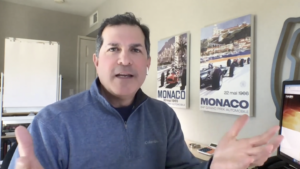
Third-party report on rising costs offers repairers, insurers data for labor rate discussions
By onBusiness Practices | Insurance | Market Trends
National AutoBody Research (NABR) has compiled a special report on financial pressures affecting body shops, hoping that it can serve as a basis for labor rate negotiations between repairers and insurers.
There is a business case to be made for adjustments in labor and paint materials, “particularly in the current economic situation that we find ourselves in with high inflation, labor rate shortages, part shortages, supply chain disruptions, everything that body shops are currently dealing with,” NABR president Sam Valenzuela said in a video accompanying the report.
Valenzuela said the intent is “to give you a nice resource to enable insurers and body shops to have fruitful, productive, data-driven discussions about this need for some adjustments to rates right now.”
The report, “The Business Need for Labor Rate Price Adjustments in Automotive Collision Repair,” can be downloaded at no cost from the NABR website, https://www.nationalautobodyresearch.com/.
NABR, an independent organization that conducts an ongoing survey of labor rates charged by collision repair shops, is predicting a sizeable upward movement of labor and paint material rates in the short term.
“In light of the new economic reality in which collision centers operate,” the report says, NABR predicts a 15% to 35% increase in labor rates in the near term, and a 13% to 29% increase in paint and material rates.
“Given the sizeable cost increases facing collision repairers,” the report concludes, “Labor Rate and Paint Material rate adjustments are required at this time to keep repairers even and provide additional resources to attract & retain necessary talent to maintain business operations, perform quality repairs, and provide excellent customer service.”
The issues identified by NABR overlap with those referenced by the nation’s largest auto body shop chain, Caliber Collision, when asked recently by Repairer Driven News about indications that it had adjusted its posted rates in major metropolitan markets.
“The entire collision repair industry is facing unprecedented challenges including substantial skilled labor shortages, double-digit inflationary pressures and supply chain difficulties,” Caliber said in a statement to RDN. “These factors are in addition to the continuing industry trend of increased repair complexity and the need for our industry to evolve. Consistent with our purpose to Restore The Rhythm of Our Customers’ Lives, Caliber is closely working with our valued carriers and other industry partners to successfully navigate these challenges together to ensure the sustainability of our industry.”
Because it expects such cost drivers as inflation, labor shortages, and supply chain disruptions to continue into 2022 and beyond, “NABR foresees that multiple rate adjustments will be needed to keep pace with increasing costs over time,” the report states.
“These adjustments are really needed now,” Valenzuela said, “to enable this industry to continue to attract and retain new talent, continue to perform high quality repairs, and make those investments necessary to keep up with advancing automotive technology, all ultimately to provide consumers a safe and proper repair.”
The report compiles existing documentation for a number of drivers of increased costs for repairers, including:
- Labor: “[The] Collision repair industry is experiencing a shortage of qualified workers, driving up wages to hire and retain qualified technicians and other employees. Additional investments are now required to hire, train, develop, and retain skilled technicians and staff.”
- Materials: “Suppliers have increased their prices multiple times in calendar year 2021, with additional planned increases throughout 2022, as they themselves face increasing costs from raw materials & packaging, shipping & transportation, and labor & manufacturing.”
- Business operations: “Supply chain disruptions are causing parts price inflation and shortages, as well as significant impact to body shop time and effort required to find alternative sources for parts, manage delays and minimize impact to the customer.”
The report notes that the Consumer Price Index is up 7.5% year-to-year in January 2022 and that the chair of the Federal Reserve has said that inflation is no longer considered “transitory.”
It also notes the effect of the jobs market, with 4.3 million jobs unfilled in the U.S. as of January. In the automotive technician field, which includes mechanical, diesel, and auto body repair technicians, vacancies outstrip candidates by a ratio of 5:1.
Also examined in detail are the effects of global supply chain issues and the rise in costs for paint materials.
The report “leads us to an opportunity and really a necessity for insurers and body shops to come together for some positive change,” Valenzuela said, “to adjust rates to what they really need to be to afford to repair cars right, to have the right people that are trained and equipped and certified and have the right equipment and facilities and so on to make a good, complete, safe repair for consumers.
“We think that this road necessarily leads to the labor rate discussion and the need for some significant adjustments there,” he said.
NABR invites shops to visit laborratehero.com to report their labor rates, as a resource for the industry.
More information
Inflation: What are the causes & how should shops plan ahead?
Images
Sam Valenzuela, president of National AutoBody Research (NABR), discusses the organization’s new report on cost pressures facing the repair industry. (Screen capture)
